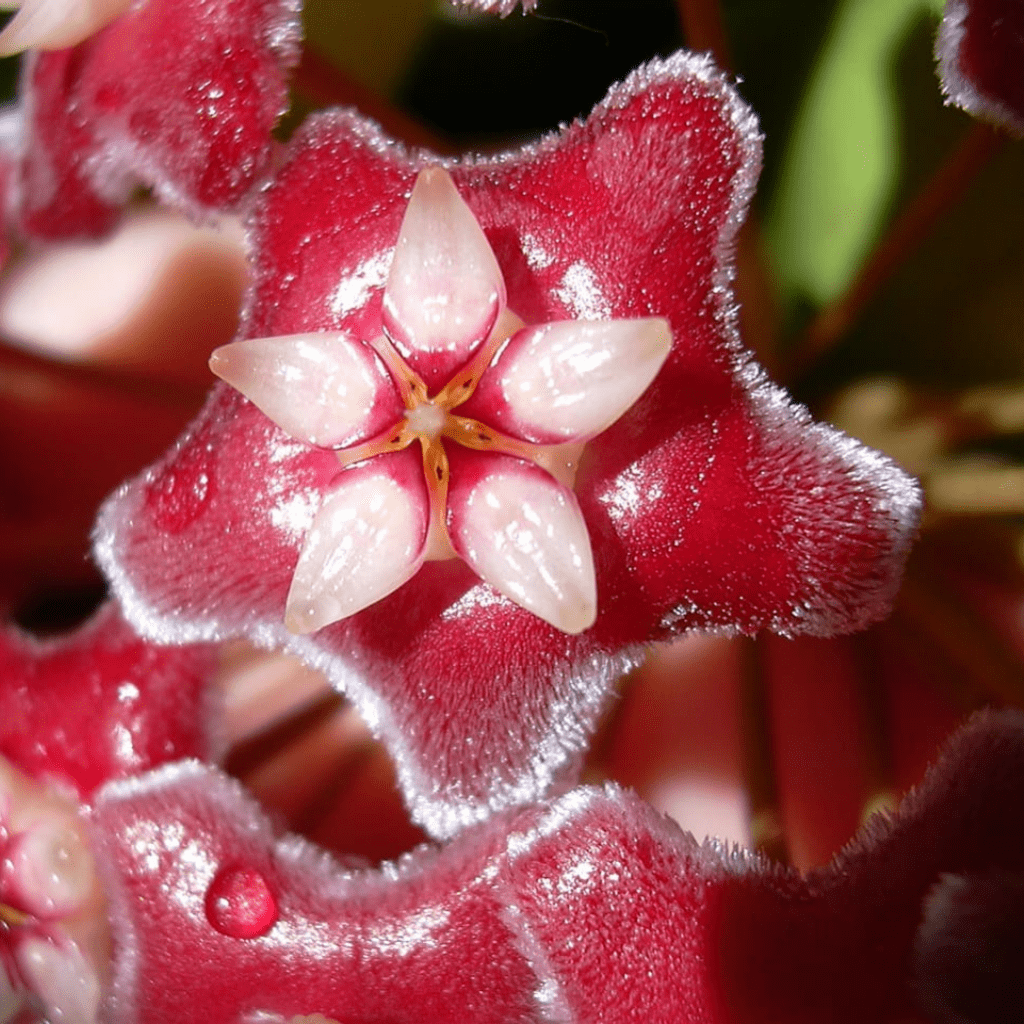Hoya Pubicalyx thrives in bright, indirect light and enjoys a well-draining potting mix. It’s a low-maintenance plant, making it perfect for both beginners and seasoned plant lovers. The glossy, green leaves have a unique texture, and when it blooms, the flowers can range from deep pink to purple hues, adding a touch of beauty to any space. Water it sparingly, letting the soil dry out between waterings, and you’ll be rewarded with vibrant blooms and lush growth.
What is Hoya Pubicalyx
Introduction and Overview
The Hoya Pubicalyx is a tropical plant beloved for its waxy, star-shaped blooms and ease of care. Originating from the Philippines, it belongs to the Apocynaceae family and is a favorite among plant enthusiasts for its adaptability and visual appeal.
Unique Features and Traits
This plant is characterized by its thick, speckled leaves and clusters of sweet-smelling flowers. The blooms, often pink or red, are not only visually appealing but also emit a delightful fragrance, especially in the evening.
Popular Varieties and Cultivars
Hoya Pubicalyx is a diverse species with many captivating varieties and cultivars. Each offers unique traits, from different leaf patterns to distinct flower colors. Here’s a look at some popular options:
Hoya Pubicalyx ‘Pink Silver’
- Features: Known for its silvery speckled leaves and vibrant pink flowers.
- Growth: Vigorous and easy to care for, making it a favorite among collectors.
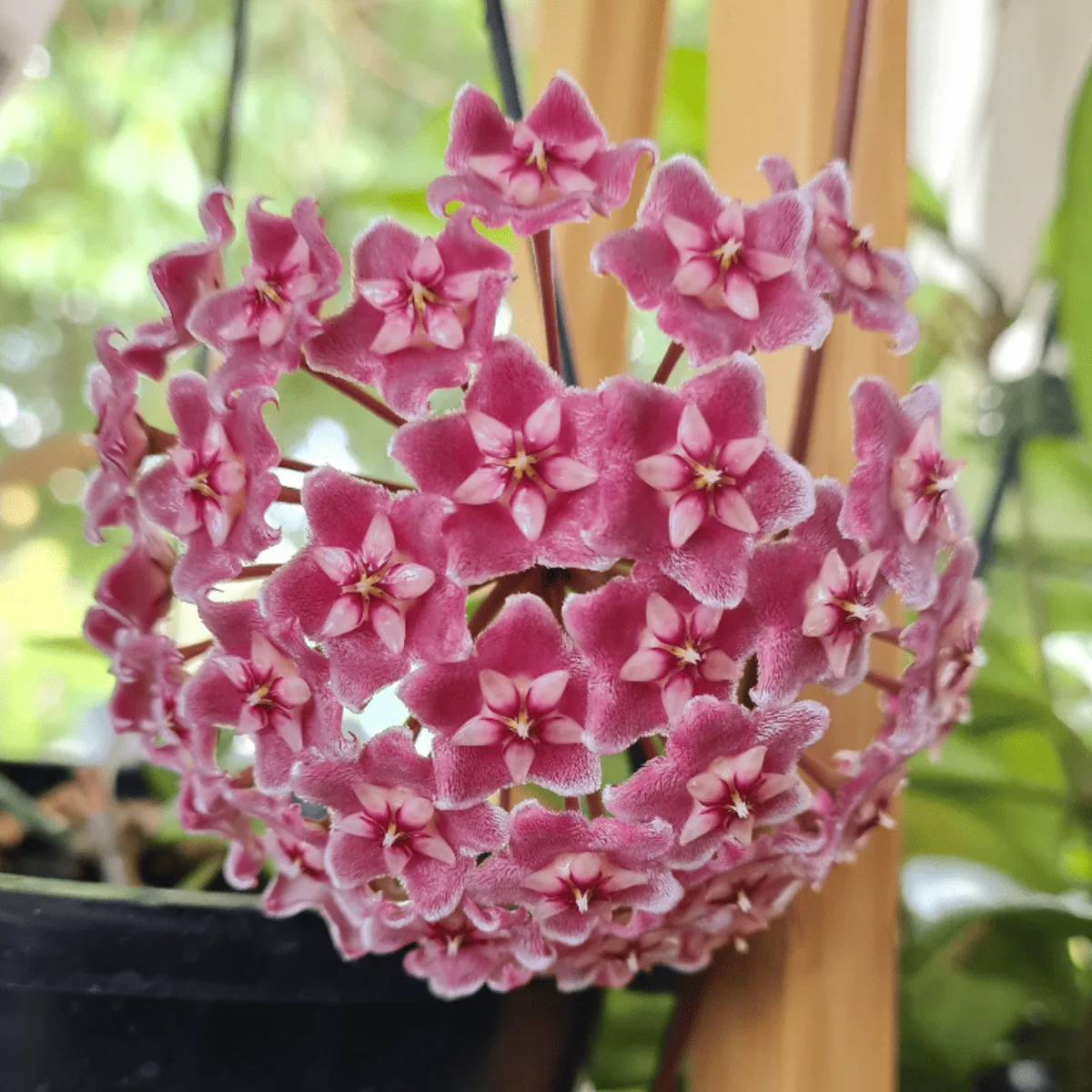
Hoya Pubicalyx ‘Royal Hawaiian Purple’
- Features: Boasts deep purple blooms with a stunning fragrance.
- Growth: Adaptable to various lighting conditions, thriving in bright indirect light.
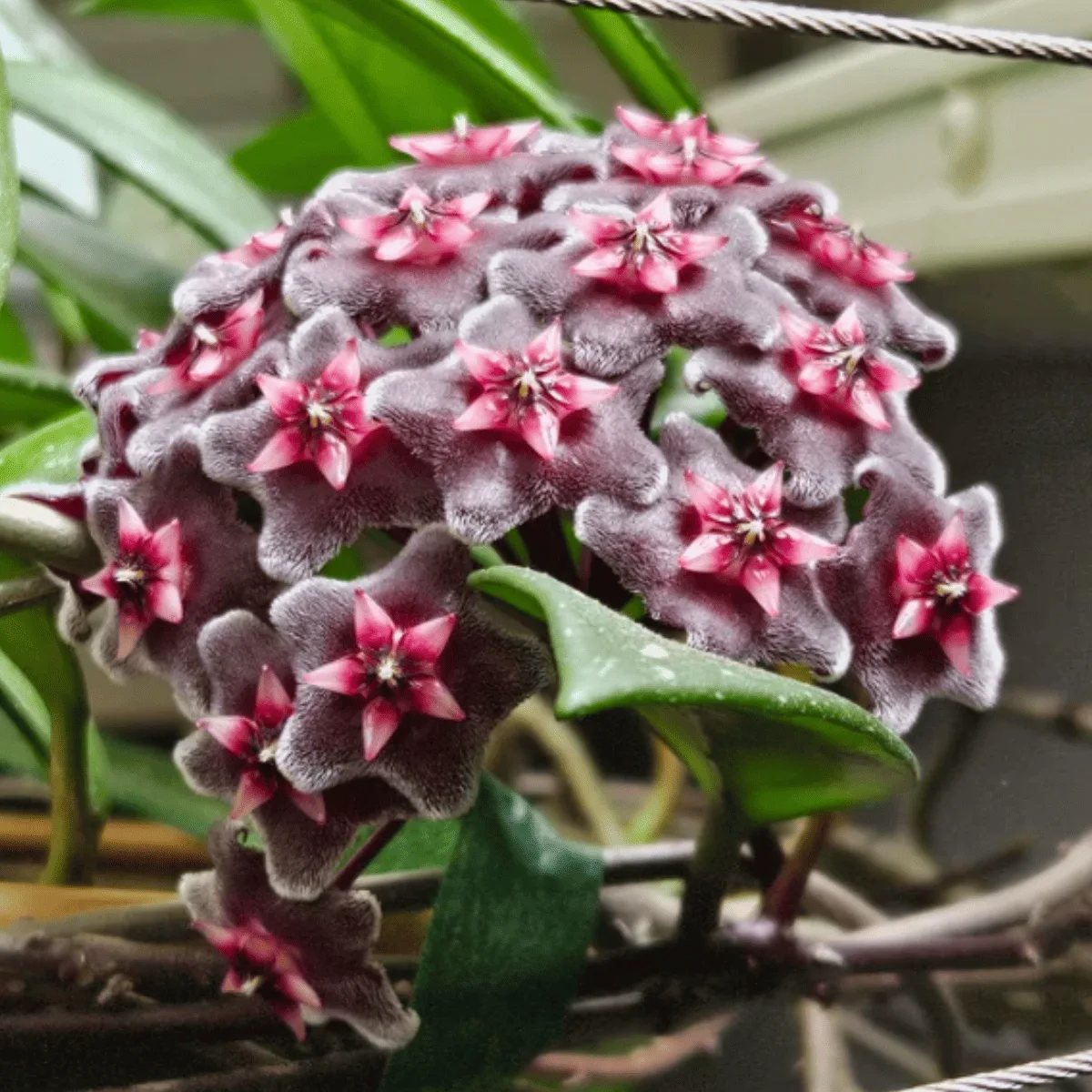
Hoya Pubicalyx ‘Red Buttons’
- Features: Characterized by its red-centered flowers and glossy leaves.
- Growth: Prefers a humid environment to enhance blooming.
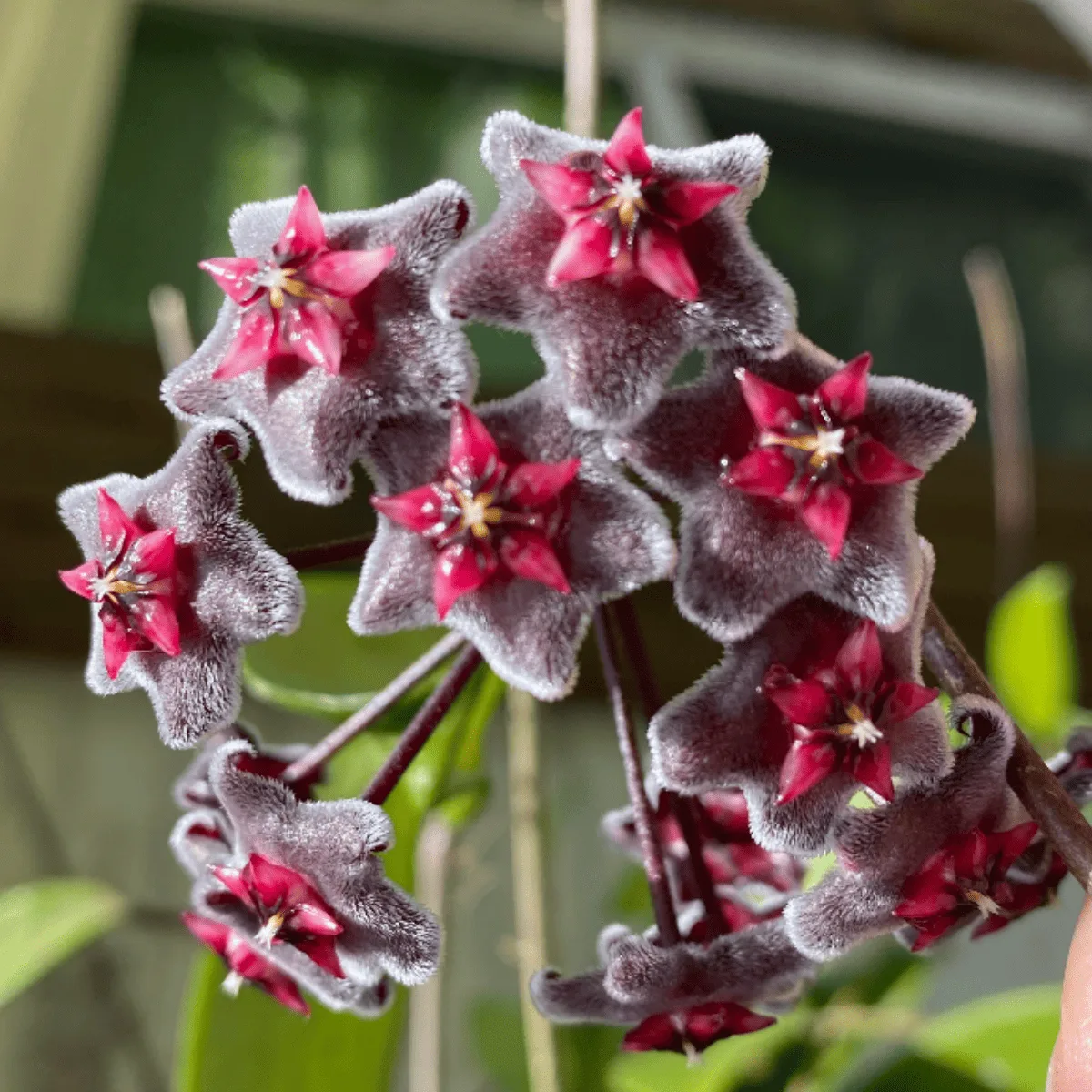
Hoya Pubicalyx ‘Chimera’
- Features: Notable for its unique variegation and colorful blossoms.
- Growth: Requires consistent care to maintain its striking appearance.
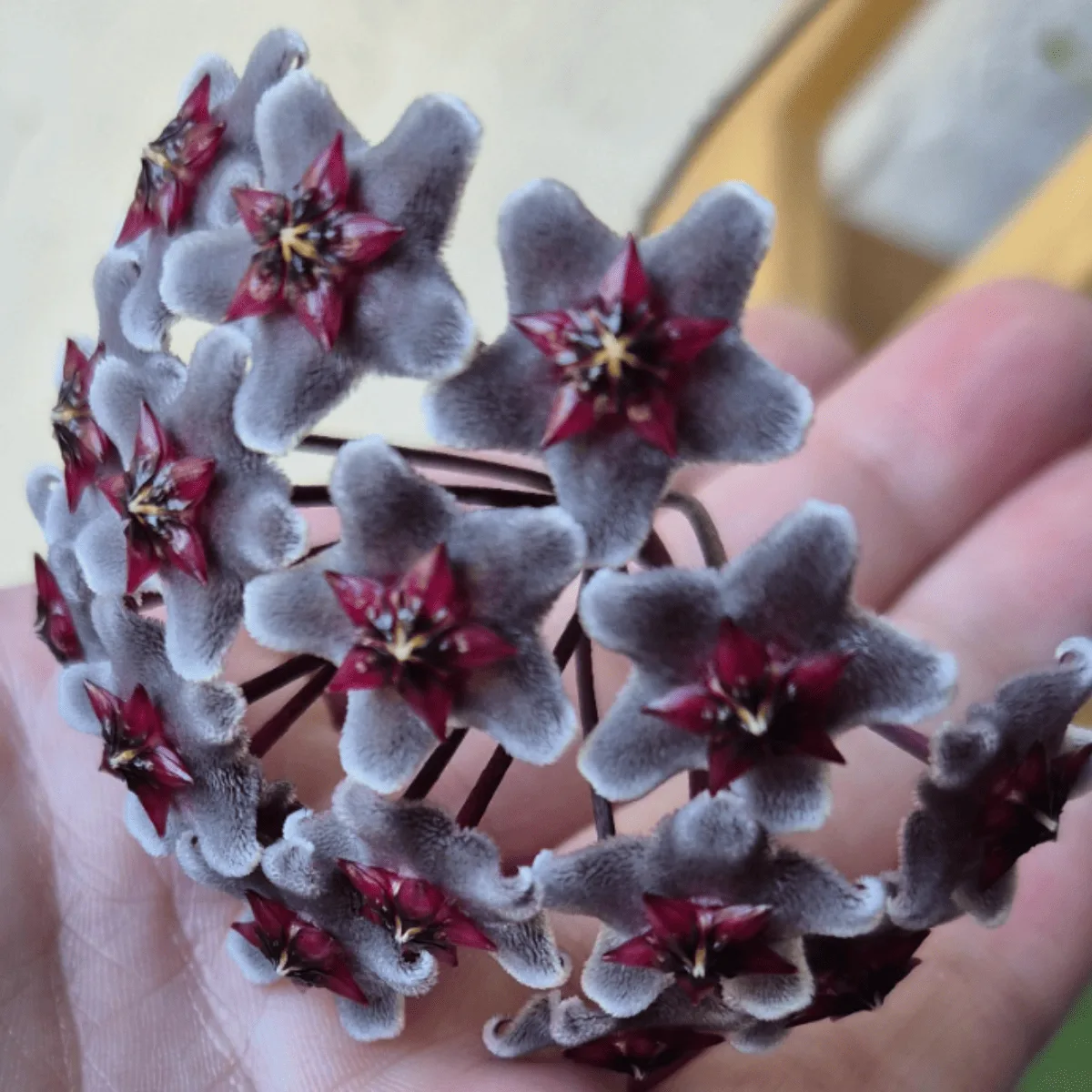
Each variety and cultivar of Hoya Pubicalyx adds its own charm to any plant collection, making them a delightful choice for enthusiasts and beginners alike.
Growing and Caring for Your Hoya Pubicalyx
Light and Temperature Needs
To flourish, the Hoya Pubicalyx requires bright, indirect sunlight. While it can adapt to lower light conditions, optimal growth and flowering occur with sufficient light. It’s best to keep the plant in temperatures ranging from 60°F to 80°F (15°C to 27°C).
Watering and Humidity Essentials
The key to watering the Hoya is moderation. Allow the soil to dry out between waterings to prevent root rot. During warmer months, increase the frequency slightly, but reduce it during winter. This plant thrives in environments with high humidity, though it can tolerate average household levels.
Soil and Nutrient Guidelines
A well-draining potting mix is crucial for the health of your Hoya Pubicalyx. A combination of orchid bark, perlite, and peat moss is ideal. Fertilize with a balanced, water-soluble fertilizer every 4-6 weeks during the growing season to promote lush growth.
Step-by-Step Guide to Propagating Hoya Pubicalyx
Ideal Timing for Propagation
The best time to propagate your Hoya is during the spring or early summer when the plant is actively growing.
Propagation Using Stem Cuttings
- Select a Healthy Stem: Choose a stem with at least two leaves.
- Make the Cut: Cut just below a node and remove the lower leaves.
- Plant the Cutting: Place it in a well-draining mix and cover with a plastic bag to maintain humidity until roots develop.
Post-Propagation Care
Once roots are established, gradually acclimate the new plant to normal humidity levels and care for it as you would a mature Hoya.
Addressing Pests, Diseases, and Issues in Hoya Pubicalyx
Pest Management
Common pests include mealybugs and aphids. Regularly inspect your plant, and if needed, use insecticidal soap or neem oil to treat infestations.
Disease Control
Root rot is a typical issue, often resulting from overwatering. Ensure your pot has adequate drainage and adjust your watering schedule accordingly.
Troubleshooting Common Issues
If your Hoya is not blooming, it may require more light. Yellowing leaves can indicate overwatering or nutrient deficiencies. Adjust care routines as needed to resolve these problems.
Additional Tips for Hoya Pubicalyx Care
Seasonal Adjustments for Optimal Growth
During winter, reduce watering and avoid fertilizing. In the growing season, ensure the plant receives ample light and nutrients.
Tips for Enhancing Blooms
Provide consistent care, avoid moving the plant once buds appear, and ensure it receives enough light to encourage flowering.
Styling Your Space with Hoya Pubicalyx
Incorporating Hoya into Interior Design
The Hoya Pubicalyx can be a stunning addition to any room. Use hanging baskets or place it on a shelf to showcase its trailing vines and beautiful blooms.
Innovative Display Ideas
Consider training your Hoya on a trellis or letting it cascade from a high shelf. Its versatile nature allows for creative displays that enhance any space.
Conclusion
The Hoya Pubicalyx is a remarkable plant that offers beauty and fragrance with minimal effort. By following the care tips outlined, you can enjoy a thriving Hoya that enhances your living environment. Whether you’re a novice or an experienced gardener, this plant is sure to bring joy and elegance to your home.
FAQ
Hoya pubicalyx is a beautiful tropical houseplant. It’s part of the Hoya genus. It’s loved for its lovely leaves, pretty flowers, and being easy to care for.
This plant has waxy leaves that often turn reddish-purple on the underside. Its flowers come in clusters and smell sweet, like honey.
For a healthy Hoya pubicalyx, use soil that drains well and is a bit acidic. It likes bright, indirect light. Make sure it gets enough water but not too much or too little.
Yes, you can grow more Hoya pubicalyx plants from cuttings. This way, you can make new plants that are just like the original. With the right steps, you can easily start new vines for your garden.
Besides the classic Hoya pubicalyx, there are many other interesting varieties and cultivars. They can have different leaf shapes, colors, and flower patterns. This gives indoor gardeners lots of choices.

